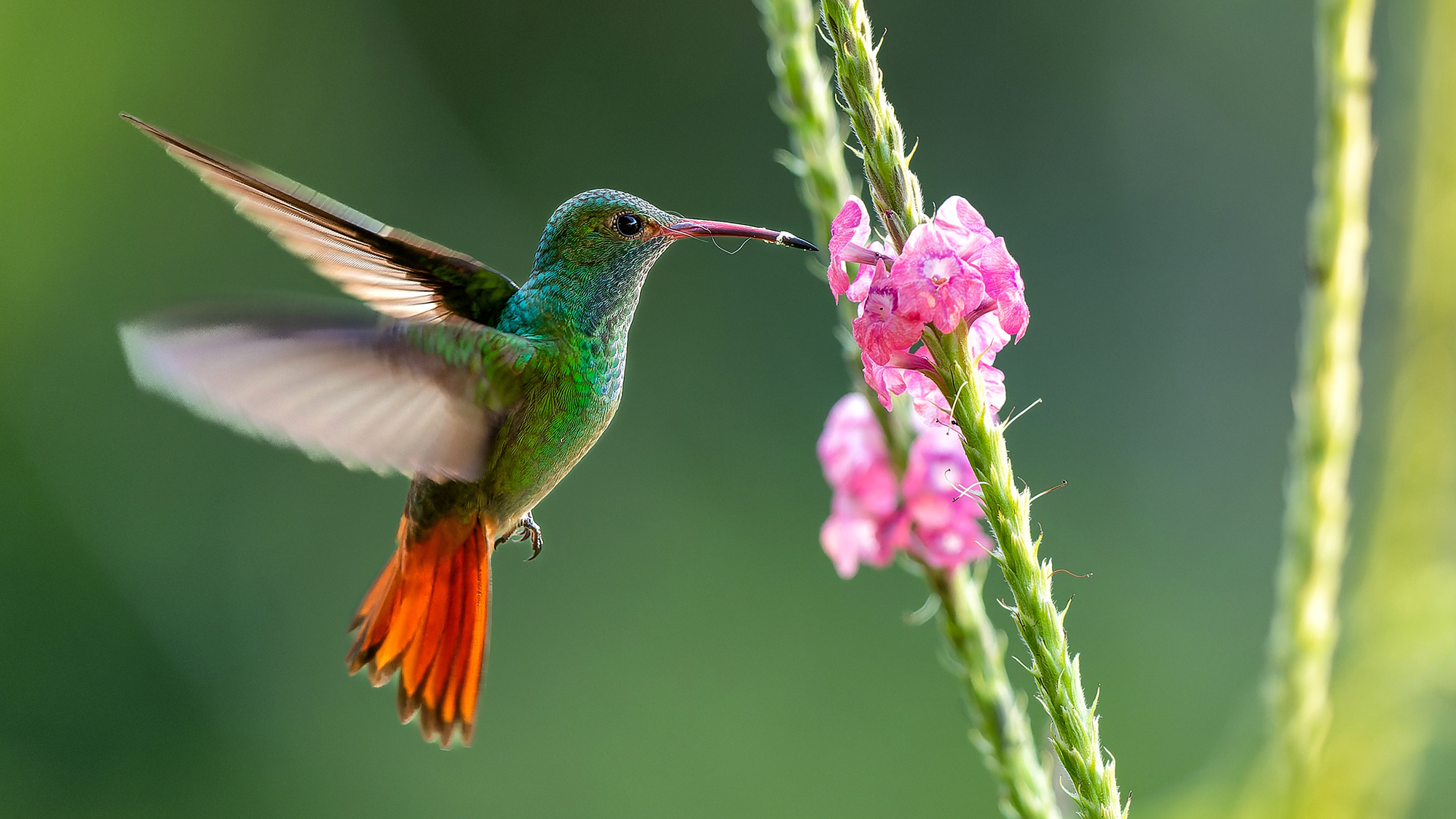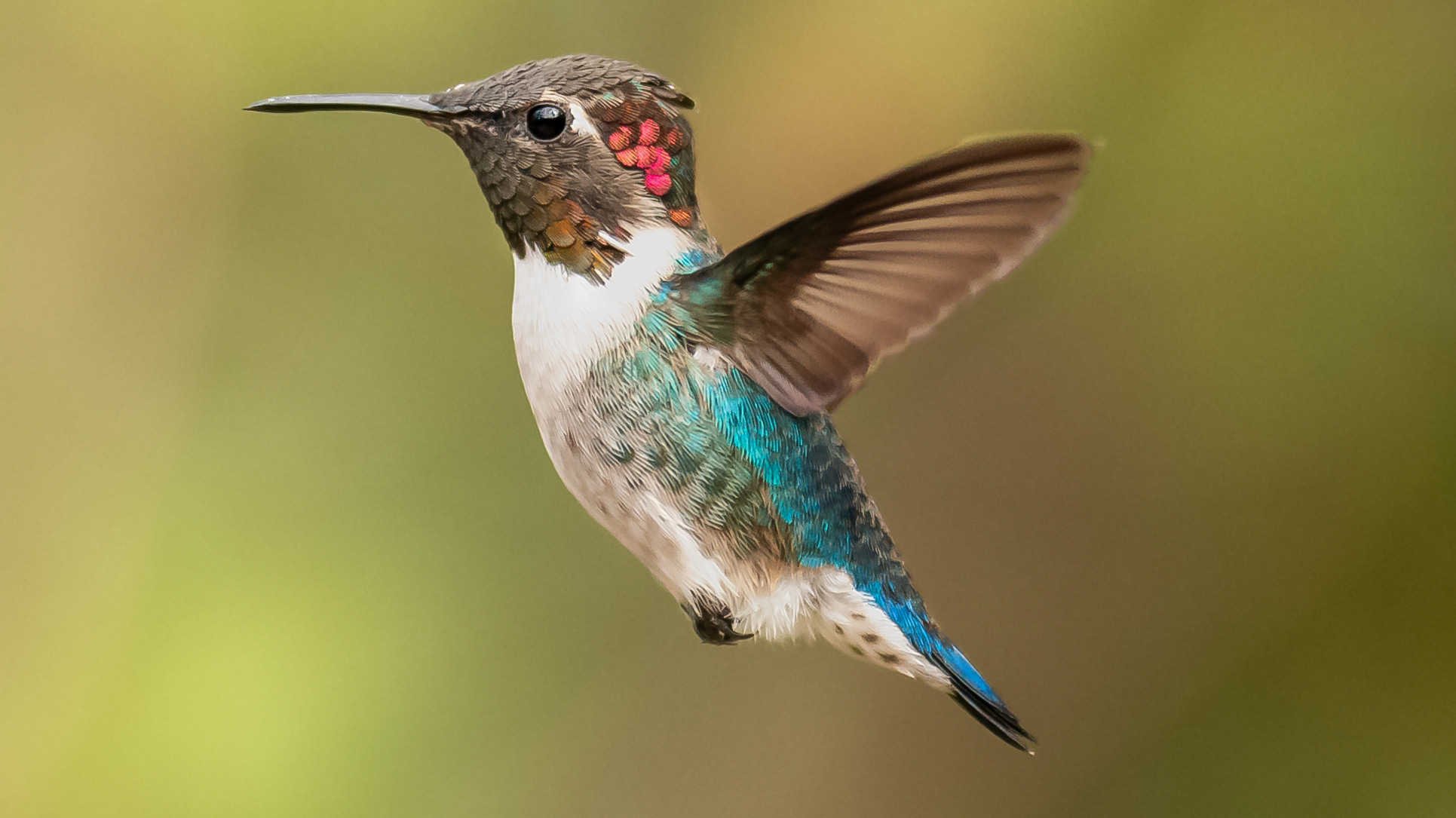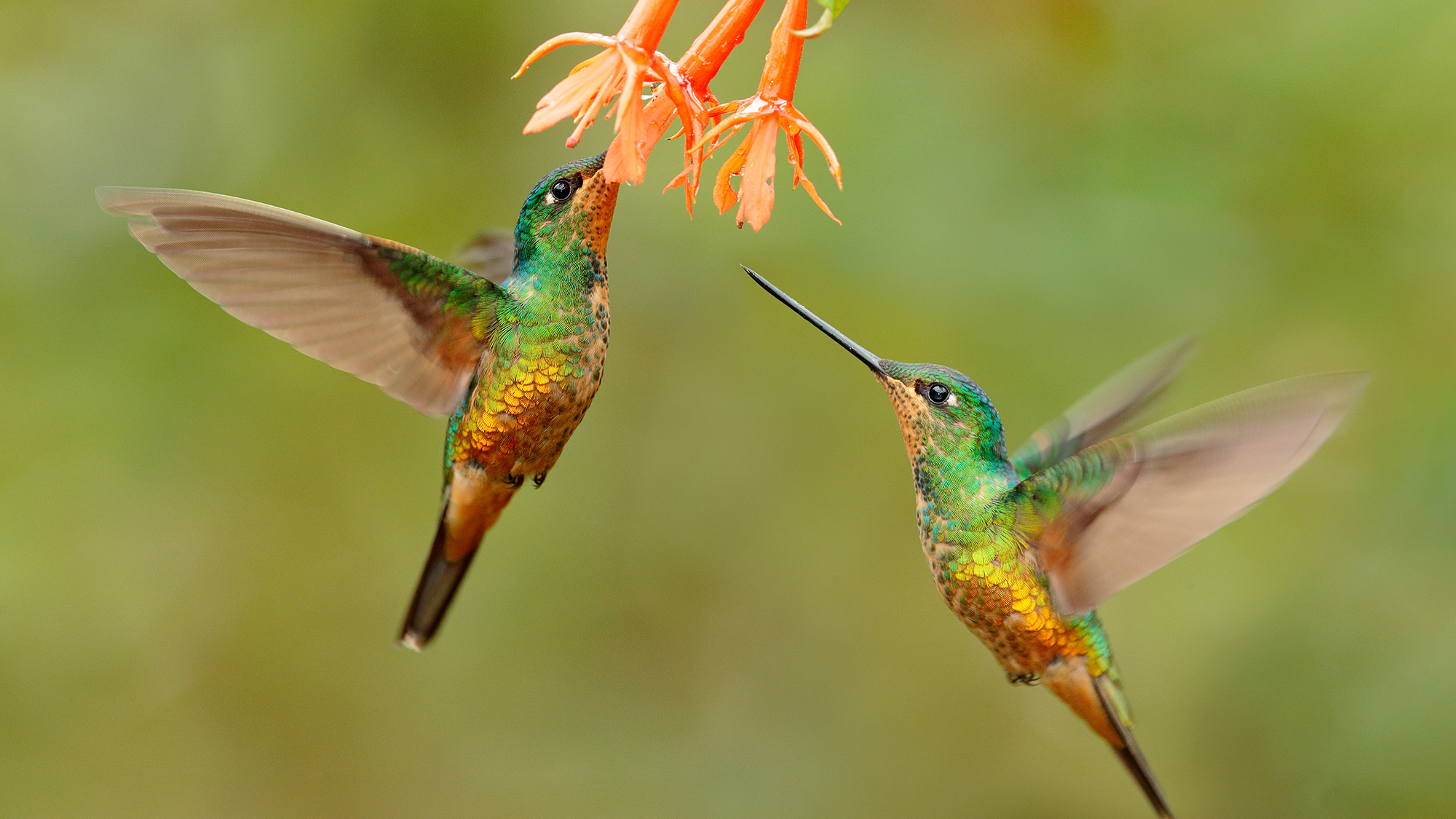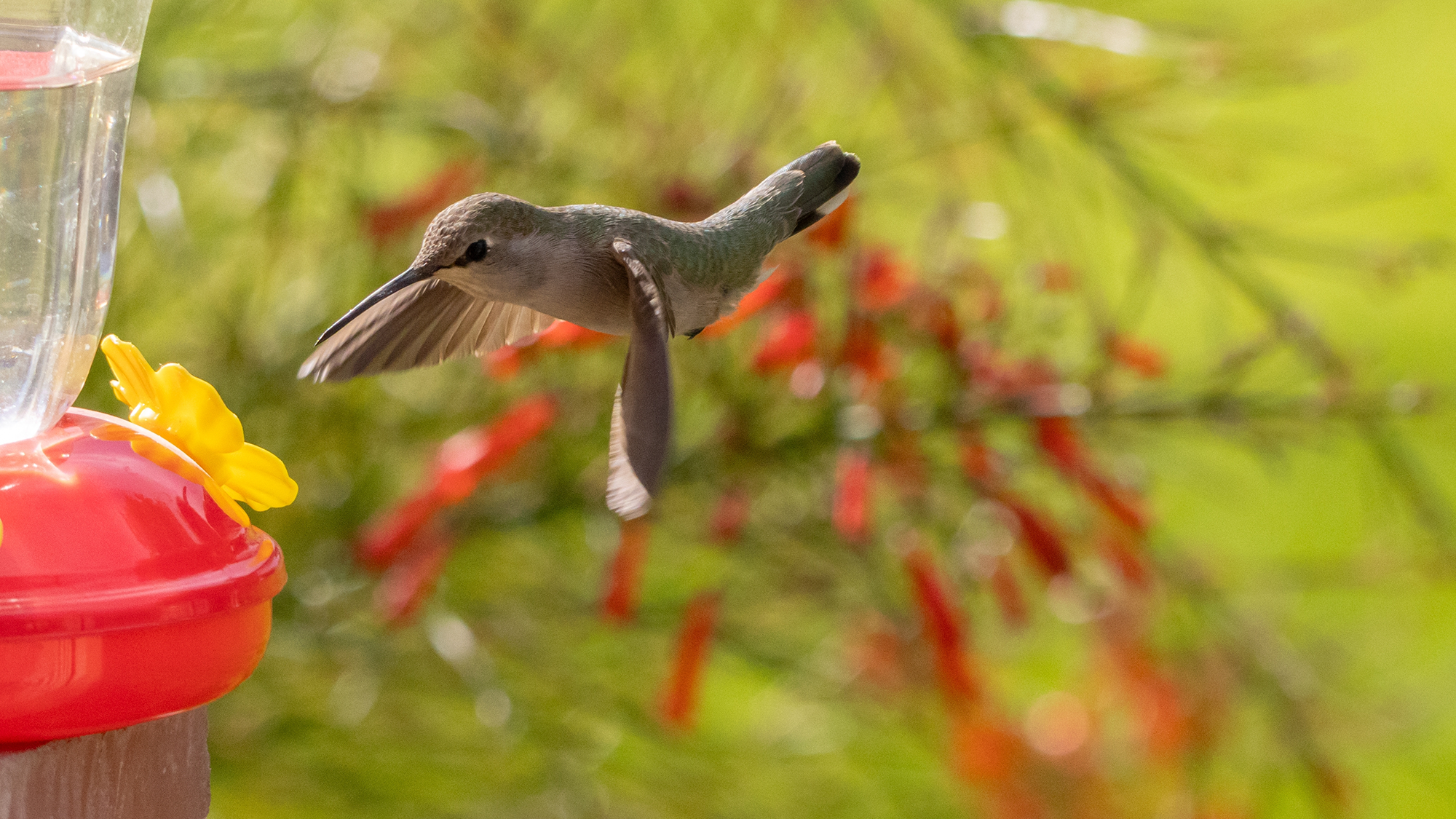How to feed hummingbirds the right way, according to experts

There’s something so exquisite about hummingbirds that makes them a joy to behold when you spot them in your yard. It’s a treat to take in this tiny bird’s beauty and unique ability to fly backward and hoover mid-air.
Apart from bringing us joy, they make terrific pollinators and eat a surprising amount of insects for their small size. And with all the energy they exert with their acrobatics, they need to consume a calorie-rich diet to help them go about their good work.
To help you discover how to feed hummingbirds the right way, I’ve called on the experts for their top tips and advice.
What’s to love about hummingbirds?
Did you know?

Hummingbirds are the smallest of all birds, with the bee hummingbird (native to Cuba) being the baby of the pack, measuring 2.2 inches long, and weighing a tiny 1.95g. In contrast, according to Birds and Blooms, the blue-throated hummingbird is almost the size of a sparrow and is the largest breeding hummingbird found in the U.S.
“Hummingbirds are incredible to watch with their tiny bodies able to hover, fly backward, and even upside down, as well as showing incredible behaviors like intense territoriality and intricate courtship displays,” says Maria Kincaid, head ornithologist at FeatherSnap. “It’s no wonder we’re interested in having them in our backyards.”
Hummingbirds also perform many beneficial tasks in our yards “by acting as pollinators to our nectar-producing flowering plants, and snacking on small insects that are often considered pests, like aphids, mosquitos, and fruit flies, among others,” Kincaid adds.
Playing our part in helping nature

While hummingbirds play their part in nature, Kincaid says we can too. “Hovering and flying as fast as hummingbirds do — ruby-throated hummingbirds beat their wings about 53 times per second on average, and some species move at up to 70 per second — takes a lot of energy, so food is an incredibly important resource for them.”
Hummingbirds love to feed from tubular flowers, so planting bee balms, coral honeysuckle, and cardinal flowers in your yard are perfect choices. And Kincaid also says they’re “particularly attracted to red tubular flowers, which may have coevolved with them. They’re also attracted to orange and pink, but will also forage on flowers of other colors from time to time.”
Apart from relying on native resources, you can also support hummingbirds by providing food. Kincaids says: “Feeders filled with sugar water provide a quick burst of energy when native nectar sources are low, either because they’ve consumed them all or they’re migrating.”
But she warns, to “never use honey, syrups, artificial sweeteners, or food colorings, as these can be harmful to hummingbirds.”
How to make hummingbird nectar

Dan DeBaun, bird blogger at Dan’s Bird Bites, says it’s easy to make hummingbird nectar at home. “Mix one part table sugar with four parts water. For example, mix 1/4 a cup of sugar with one cup of water.”
You’ll need to boil the water before adding and dissolving the sugar, and DeBaun also recommends only using table sugar for the nectar.
Kincaid advises to “make sure you bring the nectar to room temperature before filling your feeder and store any that doesn’t go into your feeder right away in the refrigerator for up to a week.”
But once you start to feed hummingbirds in your yard, don’t forget to refill and clean your feeder, with Kincaid advising to clean and refill your feeder every 1-2 days when the temperatures are warm.
“Hummingbird nectar spoils quickly, and ingesting moldy, spoiled, or fermented nectar can also be harmful to your hummingbirds,” she says, but “be aware that sugar syrup will also attract other birds, like orioles and woodpeckers, [though] also will attract pests like ants and bees.”
The best place to position hummingbird nectar

There are plenty of hummingbird feeders on the market, but Kincaid recommends using one with a nectar reservoir that flows down into multiple feeding pots, as “it makes it easy to see how much nectar is left, that it’s still clear, and that no pests have made it into the reservoir.”
“Hummingbirds find their food by sight, so it may take them some time to find your feeder and then a little more time to decide it’s a safe spot to stop for a snack,” says Kincaid.
“I like to put my hummingbird feeder near flowers and a few feet away from potential shelter, like a tree, bush or brush pile. This gives them more security as they visit for a nectar break,” says DeBaun.
Therefore, a shady, open area near flowering plants, especially tubular varieties, will be perfect. But your feeder also needs to be easy for you to remove, clean, and refill, so make sure it’s at a reachable height without having to resort to using a ladder.
Kincaid also explains that hummingbirds can be territorial, especially around breeding season, and suggests hanging several feeders if your yard has the capacity.
More from Tom’s Guide
Source link

